PCBA cleaning process
Oct 19, 2021

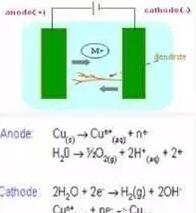
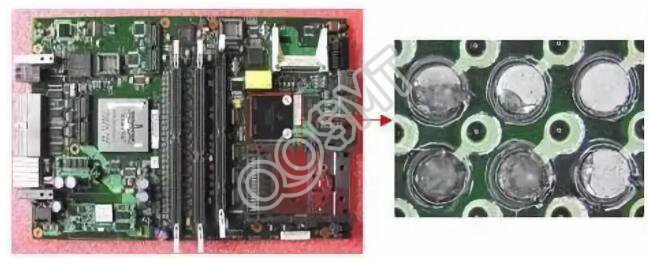
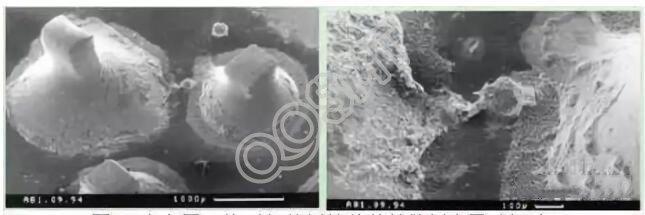
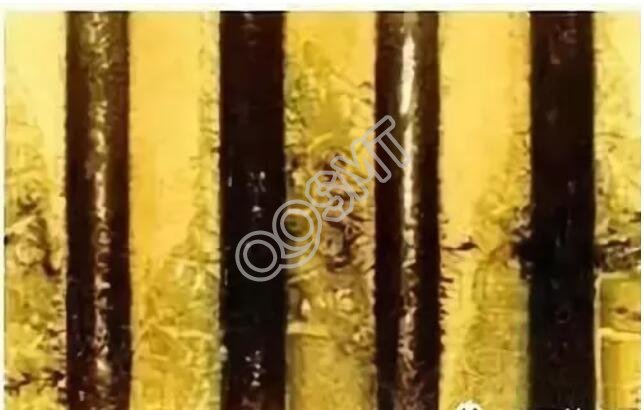
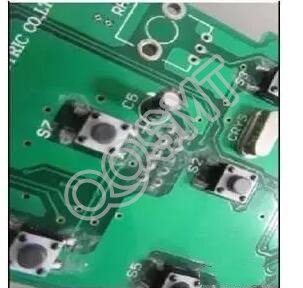
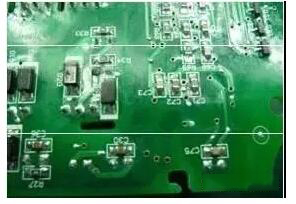
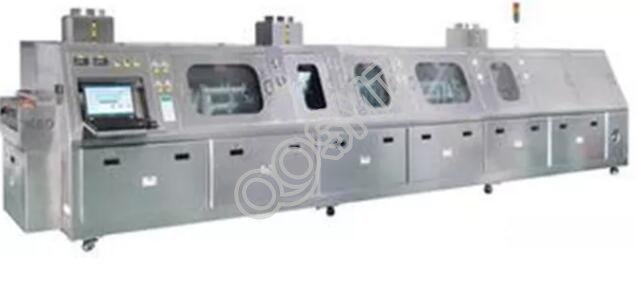
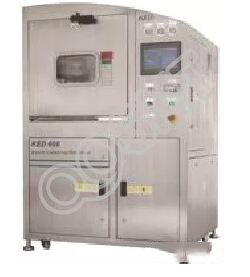
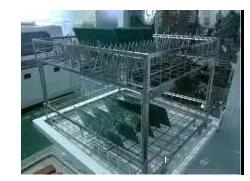
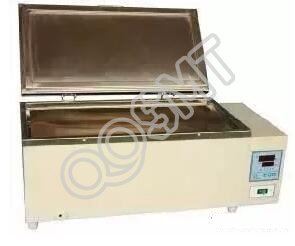
1 Introduction
Electronic products are assembled on a printed circuit board by various electronic components, and then combined into a complete machine. The most basic assembly process is printed circuit board assembly (PCBA for short) assembly (also known as electrical assembly). The soldering (ie soldering) process in PCBA assembly is an important link that affects electrical performance and reliability. According to the analysis and statistics of PCBA electrical equipment quality problems provided by China Saibao Laboratory's Reliability Research and Analysis Center, corrosion and electromigration caused by short-circuit, open circuit and other post-use failure problems accounted for 4%, which is one of the major killers of product reliability.
In the past, people's understanding of cleaning was not enough, mainly because the PCBA assembly density of electronic products was not high. It was believed that the flux residue was non-conductive, benign, and would not affect the electrical performance.
Today's electronic assembly design tends to be miniaturized, smaller devices, smaller spacing, pins and pads are getting closer and closer, the gaps that exist are getting smaller and smaller, and pollutants may get stuck in the gaps. This means that if relatively small particles remain between the two pads, they may cause potential short-circuit defects.
In the past two years, the electronics assembly industry has become increasingly demanding for cleaning, not only for products, but also for environmental protection and human health, which has given birth to many cleaning equipment suppliers. With solution providers, cleaning has also become one of the main contents of technical exchanges and seminars in the electronics assembly industry.
2 Status of cleaning
2.1 PCBA contamination
Contaminants are defined as any surface deposits, impurities, slag inclusions and adsorbed substances that reduce the chemical, physical or electrical properties of PCBA to unqualified levels. There are mainly the following aspects:
(1) The components that make up the PCBA, the pollution or oxidation of the PCB itself, etc. will cause the PCBA board surface pollution;
(2) In the PCBA manufacturing process, solder paste, solder, solder wire, etc. need to be used for soldering. The flux will produce residues on the PCBA board surface during the soldering process to form pollution, which is the main pollutant;
(3) Hand marks will be produced during the manual soldering process. The wave soldering process will produce some wave soldering claw footprints and soldering tray (fixture) marks. The PCBA surface may also have different levels of other types of contaminants, such as Hole plugging glue, residual glue of high temperature tape, handwriting and flying dust, etc.;
(4) Pollution caused by dust, water and solvent vapor, smoke, small organic matter, and static electricity caused by charged particles attached to PCBA.
The above shows that the pollutants mainly come from the assembly process, especially the welding process.
During the soldering process, a thin oxide film will be produced when the metal is heated, which will hinder the infiltration of solder and affect the formation of solder joint alloys, which is prone to false soldering and false soldering. The flux has the function of deoxidation, it can remove the oxide film of the pads and components to ensure the smooth progress of the soldering process. Therefore, flux is needed in the soldering process, and the flux plays a vital role in the formation of good solder joints during the soldering process, and sufficient plated through-hole filling rate plays a vital role.
The role of flux in soldering is to remove oxides on the soldering surface of the PCB board to make the metal surface reach the necessary cleanliness, destroy the surface tension of the molten tin, prevent the solder and soldering surface from re-oxidizing during soldering, increase its diffusion force, and help heat Pass to the welding zone. The main components of flux are organic acids, resins and other components. The high temperature and complex chemical reaction process changed the structure of the flux residue. Residues are often polymers, halides, and metal salts produced by the reaction with tin-lead. They have strong adsorption properties, but have very poor solubility and are more difficult to clean.
2.2 The hazards of pollution
Pollution may directly or indirectly cause PCBA potential risks, such as the organic acid in the residue may cause corrosion to PCBA; the electric ions in the residue may cause the movement of electrons due to the potential difference between the two pads during the electrification process. It may form a short circuit and cause the product to fail; residues will affect the coating effect, and cause problems such as inability to coat or poor coating; it may also be temporarily undetectable. After time and environmental temperature changes, coating cracks, The skin is warped, causing reliability problems.
(1) Corrosion cases are shown in Figure 1
After electron probe analysis, it was found that in addition to carbon, oxygen and lead-tin components on the surface of the solder joints, there was also halogen (Cl) detected in excess of the normal content. The action of this halide ion, with the help of air and moisture, will cyclically corrode the solder joints, and eventually form white porous lead carbonate on the surface and surroundings of the solder joints. The solder joints at the failed parts have become white, discolored and porous. If the PCBA is assembled due to the use of iron substrate bottom lead foot components, the iron substrate lacks solder bottom coverage, and Fe3+ will be quickly generated under the corrosion of halogen ions and moisture, which will make the board surface red.

Figure 1 Corrosion
In addition, in a humid environment, acidic ionic pollutants can directly corrode copper leads, solder joints and components, causing electrical failure.
(2) The electromigration case is shown in Figure 2
If there is ion contamination on the PCBA surface, electromigration is prone to occur, and the ionized metal moves between the opposite electrodes and reduces to the original metal at the reverse end, resulting in a dendritic phenomenon called dendritic distribution (dendrites, Dendrites, tin whiskers), the growth of dendrites may cause local short circuits in the circuit.

Figure 2 The formation of electromigration dendrite
If silver-containing solder is used on the PCBA, electromigration is more likely to occur after the silver is corroded into silver ions, and the PCBA that has failed electromigration often returns to normal after necessary cleaning.
(3) Cases of poor electrical contact are shown in Figure 3
In the PCBA assembly process, some resins such as rosin residues often contaminate the gold fingers or other connectors. When the PCBA is working hot or in a hot climate, the residues will become sticky and easy to absorb dust or impurities, which will increase the contact resistance. Large or even open circuit failure. The corrosion of the nickel layer on the PCB surface pad in the BGA solder joint and the presence of the phosphorus-rich layer on the surface of the nickel layer reduce the mechanical bonding strength of the solder joint and the pad, and cracks occur when subjected to normal stress, resulting in electrical contact failure.

Figure 3 BGA solder joint cracking causes poor electrical contact
2.3 Classification of pollutants
The pollutants on PCBA are mainly produced by the combination of physical bonds and chemical bonds. The so-called "physical bond" combination refers to the combination of intermolecular forces between the contaminants and the PCB surface. Generally, the physical bond energy is relatively low, generally between 0.8×103 ~ 2.1×104 J/mol. The rosin, resin, residual glue, etc. attached to the PCB belong to the physical bond. The so-called "chemical bond" combination refers to the chemical reaction between the pollutant and the PCB surface to form a bond between atoms to generate ionic compounds or covalent compounds, such as rosinate formed by abietic acid and metal. The bond energy of the chemical bond is relatively strong, between (4.2~8.4)×105J/mol.
For PCBA pollutants, there are generally three types:
(1) Polar pollutants (also called inorganic pollutants, ionic residues, ionic pollutants)
This pollutant on PCBA is a class of substances that can be ionized into positively or negatively charged ions under certain conditions (when placed in a solution), such as halides, acids and their salts. Different ionic pollutants will separate into positive and negative ions at different rates in different solutions.
In a humid environment, when the electronic components are powered on, the ions of the polar pollutants will migrate towards the conductor with the opposite polarity, which can form dendritic metal between the conductors (such as between the soldered pins) Substances cause the insulation resistance between conductors to decrease, increase the leakage current between solder joints or wires, and even short-circuit.
There are mainly the following types of ionic pollutants:
FluxActivators
Perspiration sweat
Ionic Surfactants
Ethanolamines
OrganicAcids
Plating Chemistries
(2) Non-polar pollutants (also called organic pollutants, non-ionic pollutants)
This kind of pollutant on PCBA itself is not conductive, and may be equivalent to a resistor (insulator) on the circuit board, which can prevent or reduce the flow of current. The most typical are the resin residue of rosin itself, the anti-oxidation oil in wave soldering, the grease or wax of the placement machine or the inserting machine, the residue of the tape entrained in the welding process and the skin oil of the operator. These pollutants are sticky on their own and attract dust. These organic residues (such as rosin, grease, etc.) will form an insulating film, which will hinder the electrical contact between the contact surfaces of connectors, switches, relays, etc. These effects will increase with changes in environmental conditions and time extension, causing contact The resistance increases, causing poor contact or even open circuit failure. Sometimes rosin covers the solder joints and hinders testing, especially non-polar contaminants, when combined with polar contaminants, will aggravate the degree of contamination.
There are mainly the following types of ionic pollutants:
Rosin
Oils
Greases
HandLotion hand sanitizer
Silicone
Adhesive glue
(3) Particulate pollutants
Particulate pollutants are usually dust and smoke in the working environment, dust left on the PCB such as lint, glass fiber filaments and electrostatic particles, and solder balls or tin beads and dross that appear during soldering. They can also reduce electrical performance or cause electrical short circuits, which can cause harm to electronic assembly products.
Particulate pollutants can be removed by mechanical methods such as high-pressure gas blowing, manual stripping, and cleaning.
2.4 The necessity of cleaning
(1) Appearance and electrical performance requirements
The most intuitive effect of the contaminants on the PCBA is the appearance of the PCBA. If it is placed or used in a high temperature and humid environment, the residue may absorb moisture and whiten. Due to the extensive use of leadless chips, miniature BGAs, chip scale packaging (CSP) and 0201 components in components, the distance between components and circuit boards has been shrinking, the size of the board has become smaller, and the assembly density has increased. In fact, if the halide is hidden under the component or in a place that cannot be cleaned at all under the component, local cleaning may cause catastrophic consequences due to the release of the halide. This can also cause dendrite growth, which can result in short circuits.
Improper cleaning of ionic contaminants will cause many problems: low surface resistance, corrosion, conductive surface residues will form dendritic distribution (dendrites) on the surface of the circuit board, causing local short circuits in the circuit, as shown in Figure 4.

Figure 4 Dendritic diffusion caused by ion contamination, dendrites lead to short circuits
For the reliability of military electronic devices, a major threat is tin whiskers and intermetallic compounds. This problem has always existed. Tin whiskers and intermetallic compounds will eventually cause a short circuit. In a humid environment and with electricity, excessive ion contamination on the assembly may cause problems. For example, due to the growth of electrolytic tin whiskers, the corrosion of the conductor, or the reduction of the insulation resistance, it will cause short circuits on the circuit board, as shown in Figure 5.

Figure 5 The growth of electrolytic tin whiskers caused by ion contamination causes short circuits
Improper cleaning of non-ionic contaminants can also cause a series of problems. It may cause poor adhesion of circuit board masks, poor contact of connectors, physical interference to moving parts and plugs, and poor adhesion of conformal coatings. At the same time, non-ionic pollutants may also wrap ionic pollutants in them, and may cause other Some residues and other harmful substances were wrapped and brought in. These are issues that cannot be ignored.
(2) Three anti-paint coating needs
To make the coating of the three-proof paint reliable, the surface cleanliness of the PCBA must meet the requirements of the IPC-A-610E-2010 three-level standard. Resin residues that are not cleaned off before surface coating can cause delamination of the protective layer or cracks in the protective layer; activator residues may cause electrochemical migration under the coating, leading to failure of the coating crack protection. Studies have shown that cleaning can increase the coating adhesion rate by 50%.
(3) No-cleaning also needs to be cleaned
According to the current standard, the term “no-clean” means that the residue on the circuit board is chemically safe, will not have any effect on the circuit board, and can be left on the circuit board. Corrosion, surface insulation resistance (SIR), electromigration, and other special detection methods are mainly used to determine the halogen/halide content, and then to determine the safety of the no-clean assembly after the assembly is completed. However, even if a no-clean flux with a low solid content is used, there will still be more or less residues. For products with high reliability requirements, no residues or other contaminants are allowed on the circuit board. For military applications, even no-clean electronic assemblies are required to be cleaned.
3 Principle of cleaning
Cleaning is the process of removing pollutants. It mainly uses solution cleaning methods. Through the dissolution or chemical reaction between the pollutants and the solvent, the physical bond or chemical bond between the pollutant and the PCB is destroyed, so as to achieve the separation of the pollutants. The purpose is to remove contaminants from the PCBA. Both rosin and organic acids and their tin or lead salts have a certain degree of solubility. The removal of residues is accomplished by transferring from the circuit board to the cleaning agent. In the dissolution process, increasing the temperature of the cleaning agent or supplementing with ultrasonic and scrubbing will speed up the cleaning speed and improve the cleaning effect.
The cleaning of PCBA assembly and soldering is a value-added process. Its main task is to remove the flux residues, tape residues and other pollution after soldering, and the purpose is to improve the reliability of PCBA. This used to be regarded as non-value-added labor, but now it seems to be a misunderstanding.
The cleaning of PCBA is divided into cleaning of placement (SMT section) and cleaning of insertion (THT section). Cleaning can remove the accumulation of surface contaminants in the various processing processes of the product, and can reduce product reliability. Surface contaminants Aspects of risk.
To clean the PCBA, the first thing to make sure is that the cleaning agent matches the residue generated during the soldering process of the circuit board, that is, the compatibility of the flux residue and the cleaning agent must be solved, so that the residue can be easily removed and the cleanliness goal can be achieved. . An effective cleaning process must ensure that all parameters of the soldering temperature profile, cleaning process setting parameters, solder paste solder and flux are in the best matching range.
For wave soldering, there may be a reaction between the flux and the solder mask after the furnace, which will cause dark stains. The contaminants will obviously feel sticky when touched by hand, and the general cleaning agent can not wash it off. It is also possible that the wave soldering temperature curve is unreasonable. If the preheating temperature is too high, the flux will vitrify, making it unable to perform the soldering function, and will form an unacceptable layer of contaminants on the board.
The dissolution process of using chemical solvents to remove flux residues is mostly based on alkaline pH cleaning agents. The cleaning agents contain metal ions. These metal ions can promote chemical reactions to form lead salts. Some lead salts Pb(NO) 3Easily soluble in water, others are notDissolved in water, these lead salts accumulate on the surface of PCBA to form a white precipitate.
With technological progress and changes in regulations, cleaning products will face more and more challenges. For example: CEE 648 standard, REACH, they are related to which chemical products can or cannot be used in cleaning agents. In the past few years, cleaning agent technologies such as CFC, ETD, ES, HCFC have been eliminated by the market, replaced by new cleaning agent technologies such as chlorine-free solvents and water-based cleaning agents and new cleaning equipment.
4 Actual cleaning implementation
In terms of cleaning ability, the chlorofluorocarbon trichlorotrifluoroethane (CFC-113 for short) in the solvent we use has high degreasing efficiency, strong solubility for flux residues, volatile, non-toxic, non-flammable and non-flammable. It has the advantages of explosion, no corrosion to electronic components and PCB, and stable performance. It is an ideal solvent. However, it has a destructive effect on the atmospheric ozone layer and seriously endangers the living environment of mankind. In 1987, various governments in Montreal, Canada signed the Ozone Layer Protection Agreement-the Montreal Protocol on Ozone Depleting Substances. The industry continues to explore and seek better alternative cleaning solvents that prohibit the use of ozone depleting substances (ODS). So far, there is no solvent that can be completely replaced and is excellent in cleaning ability.
Most of the small and medium-sized foundries or manufacturing plants adopt manual cleaning methods based on cost considerations. That is, use an anti-static brush to moisten the cleaning agent to scrub the PCB, tilt the PCB to a 45° angle, and brush from top to bottom with a brush to let the cleaning agent dissolve the residue and then flow down with the cleaning agent. It is mainly used for local cleaning or cleaning of PCBA with components that cannot be cleaned on some PCBs. Although this process method is simple, it is inefficient and consumes a lot of cleaning agent.
For well-known foundries or large-scale manufacturing plants, the cleaning process is successively reconsidered, and corresponding online or offline cleaning machines are configured to replace manual cleaning with equipment cleaning to ensure the quality of PCBA cleaning.
In the actual cleaning process, hand-soldered PCBA often appears, and the board surface becomes white after placement, and the white marks are scattered around the solder joints (as shown in Figure 6a), or the PCBA board surface soldered by wave soldering Dark stains (as shown in Figure 6b) during cleaning seriously affect the appearance acceptance and do not meet the IPC-A-610E-2010 standard.

Figure 6a After manual welding, cleaning and placing

Figure 6b After wave soldering and cleaning
White residue is a common contaminant on PCBA, and is generally a by-product of flux. Common white residues are polymerized rosin, unreacted activator and the reaction product of flux and solder, lead chloride or bromide, etc. These substances expand in volume after absorbing moisture, and some substances also undergo hydration reaction with water. White Residues are becoming more and more obvious. These residues are extremely difficult to remove on the PCB. If overheating or high temperature time is long, the problem will be more serious. The infrared spectrum analysis results of the rosin and residues on the PCB surface before and after the soldering process confirm this process.
Regardless of whether the board has white residue after cleaning, or the white substance appears on the no-clean board after storage, or the white substance on the solder joints found during repair, there are nothing more than four situations:
(1) Rosin in flux: most of the white substances produced after cleaning, storage, and solder joint failure are inherent rosin in the flux. Rosin is usually a transparent, hard and brittle solid substance with no fixed shape, not a crystal. Rosin is thermodynamically unstable and has a tendency to crystallize. After the rosin crystallizes, the colorless transparent body becomes a white powder. If the cleaning is not clean, the white residue may be the crystalline powder formed by the rosin after the solvent volatilizes. When the PCB is stored under high humidity conditions, when the absorbed moisture reaches a certain level, the rosin will gradually change from the colorless and transparent glass state to the crystalline state, forming a white powder from the viewing angle. The essence is still rosin, but the shape is different, it still has good insulation, and will not affect the performance of the board. The rosin acid in the rosin and the halide (if used) are used together as an active agent. Artificial resins usually do not react with metal oxides below 100°C, but they react quickly when the temperature is higher than 100°C. They volatilize and decompose quickly, and have low solubility in water.
(2) Rosin denatured substance: This is the substance produced by the reaction of rosin and flux during the welding process of the board, and the solubility of this substance is generally poor, and it is not easy to be cleaned. It stays on the board and forms a white residue. . However, these white substances are all organic components, which can still ensure the reliability of the board.
(3) Organometallic salt: The principle of removing oxides on the welding surface is that organic acid reacts with metal oxides to form a metal salt that is soluble in liquid rosin. After cooling, it forms a solid solution with rosin and is removed with the rosin during cleaning. If the welding surface and parts are highly oxidized, the concentration of the products after welding will be high. When the oxidation degree of rosin is too high, it may remain on the board together with undissolved rosin oxide. At this time, the reliability of the board will be reduced.
(4) Metal inorganic salts: These may be metal oxides in solder and flux or halogen-containing activators in solder paste, halogen ions in PCB pads, halogen ion residues in the surface coating of components, and FR4 materials containing halogen ions. The substances produced by the reaction of halide ions released by halogen materials at high temperatures generally have little solubility in organic solvents.
In the assembly process, it is very likely that halogen-containing flux is used for electronic accessories (although the supplier provides environmentally friendly fluxes, there are still relatively few halogen-free fluxes), and there are residues on the board after soldering. Halogen ions (F, Cl, Br, l). These ionic halogen residues are not white by themselves, nor are they sufficient to cause whitening of the board surface. This kind of substance produces strong acid when it encounters water or moisture. These strong acids start to react with the oxide layer on the surface of the solder joint to form acid salt, which is the white substance seen.
Pb + 1/2 O2 ===== PbO
PbO + 2HCl ===== PbCl + H2O
PbCl + H2O + CO2 ===== PbCO3 (white powdery corrosive) + 2HCl
Hydrochloric acid will also corrode the existing copper, forming copper oxide
CuO + 2HCl ===== CuCl2 + H2O
Using detergent to clean, because the poor detergent contains a certain amount of water, the board will absorb moisture when it is used in a large amount of cleaning. These factors together are the reason why the board surface is still white after washing.
5 Evaluation of cleaning effect
The qualitative and quantitative inspection of PCBA cleaning effect is evaluated by cleanliness index.
5.1 Cleanliness grade standards
According to the relevant regulations of the People’s Republic of China’s electronic industry military standard SJ20896-2003, the cleanliness of electronic products is divided into three levels according to the reliability and performance requirements of electronic products, as shown in Table 1.
Table 1 Cleanliness grades of electronic products
In actual work, it is practically impossible to eradicate pollution. A compromise is to determine the acceptable and unacceptable degree of pollution on the circuit board. According to IPC-J-STD-001E standard flux residue three-level standard regulations <40μg/cm2, ionic contaminant content three-level standard regulations ≤1.5 (Nacl)μg/cm2, extraction solution resistivity> 2×106Ω·cm.
Please note that with the miniaturization of PCBA, it is almost certain that this content is too high. Nowadays, the requirement of ionic pollutants is about ≤0.2(Nacl)μg/cm2.
5.2 PCBA cleanliness testing method
5.2.1 Visual inspection
Use a magnifying glass (X5) or optical microscope to observe the PCBA, and evaluate the cleaning quality by observing whether there are solid flux residues, tin dross tin beads, unfixed metal particles and other contaminants. Usually the PCBA surface must be as clean as possible, and there should be no traces of residues or contaminants. This is a qualitative indicator. Usually, the user’s requirements are the goal, and the inspection criteria are set by yourself, and the magnifying glass is used for inspection. The characteristic of this method is simple and easy to implement. The disadvantage is that it cannot check the pollutants at the bottom of the components and the residual ion pollutants. It is suitable for occasions with low requirements.
5.2.2 Solvent extract test method
The solvent extraction test method is also called the ionic pollutant content test. It is an average test for the content of ionic pollutants. The test generally adopts the IPC method (IPC-TM-610.2.3.25). It is to immerse the cleaned PCBA in the test solution of the ionic pollution analyzer (75%). ±2% pure isopropanol plus 25% DI water), dissolve the ionic residue in the solvent, carefully collect the solvent, and measure its resistivity.
Ionic contaminants usually come from the active substances of the flux, such as halogen ions, acid radical ions, and metal ions produced by corrosion. The result is expressed in the equivalent number of sodium chloride (NaCl) per unit area. That is, the total amount of these ionic pollutants (only those that can be dissolved in the solvent) is equivalent to the amount of NaCl, not necessarily or only NaCl on the surface of PCBA.
5.2.3 Surface Insulation Resistance Test Method (SIR)
This method is to measure the surface insulation resistance between conductors on the PCBA. The measurement of the surface insulation resistance can point out the leakage of electricity under various temperature, humidity, voltage and time conditions due to pollution. Its advantage is direct measurement and quantitative measurement; and it can detect the presence of flux in a local area. Because the residual flux in PCBA solder paste mainly exists in the gap between the device and the PCB, especially the solder joints of BGA, it is more difficult to remove, in order to further verify the cleaning effect, or verify the safety (electrical performance) of the solder paste used , Usually measure the surface resistance between the components and the PCB to check the cleaning effect of PCBA.
The general SIR measurement condition is to test 170 hours at an ambient temperature of 85°C, an ambient humidity of 85%RH and a 100V measurement bias.
5.2.4 Ionic pollutant equivalent test method (dynamic method)
See SJ20869-2003 in Section 6.3.
5.2.5 Detection of flux residue
See SJ20896-2003 section 6.4.
6 Several advanced cleaning processes
Nowadays, cleaning processes are used in the production of many PCBAs. For products with different levels of requirements, the fluxes used, and the differences in the processes, the cleaning agents, required equipment, and processes are different. Most equipment suppliers have introduced cleaning machine equipment and cleaning solutions, and first detect and analyze the residues after welding in the manufacturing plant, and then provide targeted system cleaning solutions. There are fully automated online cleaning machines, semi-automated offline cleaning machines, manual cleaning machines, etc., suitable for all water-based (cleaning with ionized water), semi-aqueous (cleaning with aqueous chemical substances, such as saponification liquid) and All chemical solvent cleaning. Many companies tend to adopt water-based cleaning agents and develop in an environmentally friendly direction. The world-renowned cleaning products and technical support suppliers include ZESTRON, KYZEN, etc.
Fully automated online cleaning machine
The physical map of a fully automated online cleaning machine is shown in Figure 7. The cleaning machine thoroughly and effectively cleans organic and inorganic contaminants such as rosin flux, water-soluble flux, and no-clean flux/solder paste remaining on the surface of SMT/THT PCBA after soldering. It is suitable for large-scale PCBA cleaning. It uses safe and automated cleaning equipment to be placed on the Denso production line, and completes the chemical cleaning (or water-based cleaning), water-based rinsing, and drying processes online through different cavities. During the cleaning process, the PCBA is cleaned in different solvents through the conveyor belt of the cleaning machine. The cleaning fluid must be compatible with components, PCB surface, metal coating, aluminum coating, labels, writing and other materials. Special parts need to consider whether they can withstand cleaning.

Figure 7 Fully automated online cleaning machine
The cleaning process is as follows: board loading-chemical pre-washing-chemical cleaning-chemical isolation-pre-rinsing-rinsing-last spray-wind cutting Drying----drying. The cleaning process is shown in Figure 8.
Semi-automated offline washing machine
A semi-automated offline physical map is shown in Figure 9. The cleaning machine thoroughly and effectively cleans organic and inorganic contaminants such as rosin flux, water-soluble flux, and no-clean flux/solder paste remaining on the surface of SMT/THT PCBA after soldering. It is suitable for small batch and multi-variety PCBA cleaning. It can be set anywhere on the production line through manual handling. It can complete chemical cleaning (or water-based cleaning), water-based rinsing, and drying in a cavity offline. During the cleaning process, PCBA usually needs to be fixed by a fixture or placed in a basket. The cleaning solution must be compatible with components, PCB surface, metal coating, aluminum coating, labels, writing and other materials. Special parts need to be considered whether they can withstand Clean.

Figure 9 Semi-automated offline cleaning machine
The placement density and placement angle of PCBA in the cleaning basket have certain requirements. These two factors have a direct impact on the cleaning effect, as shown in Figure 10.

Figure 10 PCBA loaded into the cleaning basket
Manual washing machine
A physical map of a manual cleaning machine (also called a constant temperature cleaning tank) is shown in Figure 11. This cleaning machine thoroughly and effectively cleans the residual rosin flux, water-soluble flux, rosin flux, no-clean flux/solder paste and other organic and inorganic contaminants on the surface of SMT/THT PCBA after soldering. It is suitable for the cleaning of small batch samples of PCBA. Through temperature control, it is adapted to the manual cleaning process of MPC micro-phase cleaning agent and completes the chemical cleaning in a constant temperature bath.

Figure 11 Manual cleaning tank
Note: Ultrasonic cleaning, as a low-investment and easy-to-implement solution, is also adopted by some PCBA manufacturers. However, the aerospace military industry limited (prohibited) the use of ultrasonic cleaning technology. Ultrasonic cleaning should not be used to clean electrical or electronic parts, components or parts equipped with electronic components. Protective measures should be taken during cleaning to prevent damage to the components (US military Standard DOD-STD-2000-4A "General Welding Technical Requirements for Electrical and Electronic Equipment"); IPC-A-610E-2010 Level 3 standard also generally prohibits ultrasonic cleaning process
7 System design and process considerations
With the popularization of the concept of environmental protection and the government’s prohibition of freon, the culprit responsible for destroying the atmosphere, the industry has looked for a no-clean process to save costs and commit to environmental protection. However, as the assembly density and complexity continue to increase, the lead and pad The gap between them is getting smaller and smaller, and many people are beginning to worry about the potential harm to the electrical performance of the particles on the circuit board.If the PCBA is not cleaned, there may be potential risks such as electrochemical migration, leakage current, and signal distortion in high-frequency circuits.
In the past two years, since foreign countries have begun to pay attention to cleaning problems, many cleaning equipment suppliers and solution companies have emerged to provide cleaning equipment, solvents and cleaning process services. China's military industry companies have also begun to apply research in this area, and there are more and more customer requirements for PCBA cleaning in foundry and manufacturing companies.
For cleaning issues, all personnel involved in the product's life cycle must include cleaning in their plans. From the planning and design of the product, the manufacturability design of cleaning, PCB design, and component selection must be considered. , The assembly process requires the transformation of the production line and so on.
Most designers list cleaning as a post-design task and leave it to process engineers to do, but PCB layout design has a great impact on the cleaning ability, and cleaning in subsequent manufacturing can not solve all problems.
7.1 Control the cleanliness of PCB and components
The incoming PCB and components should ensure that there are no obvious contaminants on the surface, and the contaminants on the surface of the components will also be brought to the PCB due to process reasons. Generally, the ion pollution of PCB should be controlled below 1.5mgNaCl/cm2, and the components should maintain the same cleanliness requirements while maintaining solderability.
7.2 Prevent contamination during PCBA transfer
PCBA assembled in many companies are stacked at will, the workshop environment is poor, there is no ventilation equipment, and the personnel are working with bare hands. It is easy to cause pollution of the PCBA board, but sweat pollution is inevitable. Therefore, necessary measures must be taken to ensure that the operating conditions are necessary. Cleanliness requirements.
7.3 Selection of solder flux
It mainly includes flux, solder paste, solder bar, and solder wire. Due to the preheating, soldering heat and tin wave cleaning of the ideal flux in the process, the active substances in the flux will be fully utilized and the cleanliness will be kept to the best. In addition, part of the solder paste used in SMT has a lot of residues and is extremely difficult to remove. Therefore, the selection of solder flux is very important. It is best to choose from the products that have passed the test, and carry out the necessary process tests to make it match the cleaning process, and then determine the use.
7.4 Strengthen process control
The main residue of PCBA comes from flux. Therefore, under the condition of ensuring the welding quality, appropriately increase the preheating and welding temperature during welding, as well as the necessary welding time, so that as many ion residues as possible will decompose or volatilize with the high temperature, so as to obtain a clean PCBA. In addition, other control measures, such as the use of moisture-proof resin to protect the surface of PCBA, indirectly prevent or reduce the impact of ionic residues, this is also a good way.
In the PCBA assembly production process, the purpose of cleaning the assembly tool fixture SMT steel mesh and welding tray is to prevent pollution and ensure the cleanliness of the PCBA.
7.5 Use the cleaning process
The ion pollution of most PCBA is difficult to reach less than 1.5mgNaCl/cm2 before cleaning. Many PCBAs with high requirements must undergo strict cleaning. When cleaning, both rosin or resin must be targeted at ionic residues, and cleaned according to the chemically similar principle of compatibility. Cleaning is the process of dissolving residues, so a mixed solvent of polar and non-polar must be used to effectively remove PCBA residues.
7.6 PCBA cleaning precautions
(1) The printed board assembly should be cleaned as soon as possible after assembly and welding (because the flux residue will gradually harden over time and form corrosives such as metal halides), and thoroughly remove the residual flux, solder and other contamination of the printed board Things.
(2) When cleaning, prevent harmful cleaning agents from intruding into the incompletely sealed components, so as to avoid damage or potential damage to the components.
(3) After the printed board components are cleaned, put them in an oven at 40~50℃ and bake and dry for 20~30 minutes. Before the cleaned parts are dried, the parts should not be touched with bare hands.
(4) Cleaning should not affect components, markings, solder joints and printed boards.
8 concluding remarks
Generally, the assembly of electronic product PCBA must go through the SMT+THT process, during which it must go through wave soldering, reflow soldering, manual soldering and other soldering processes. No matter what method of soldering, the assembly (denso) process is the main one. Assemble the source of contamination. Cleaning is a process of dissolving and removing welding residues. The purpose of cleaning is to extend the life of the product by ensuring good surface resistance and preventing leakage.
It can be seen from the evolving electronic product market that modern and future electronic products will become smaller and smaller, and the requirements for high performance and high reliability will be stronger than ever. Thorough cleaning is a very important and highly technical task, which directly affects the working life and reliability of electronic products, as well as the protection of the environment and human health. It is necessary to re-understand and solve the problem of soldering cleaning from the perspective of the entire production process system. The implementation of the program should cooperate with the use of soldering materials such as flux, solder paste, solder wire, etc., to make organic solvents, inorganic solvents and their mixed solvents or water washing or Only when no-cleaning is matched with it, can the residue be effectively removed, so that the cleanliness of the cleaning is easier to meet customer expectations.
